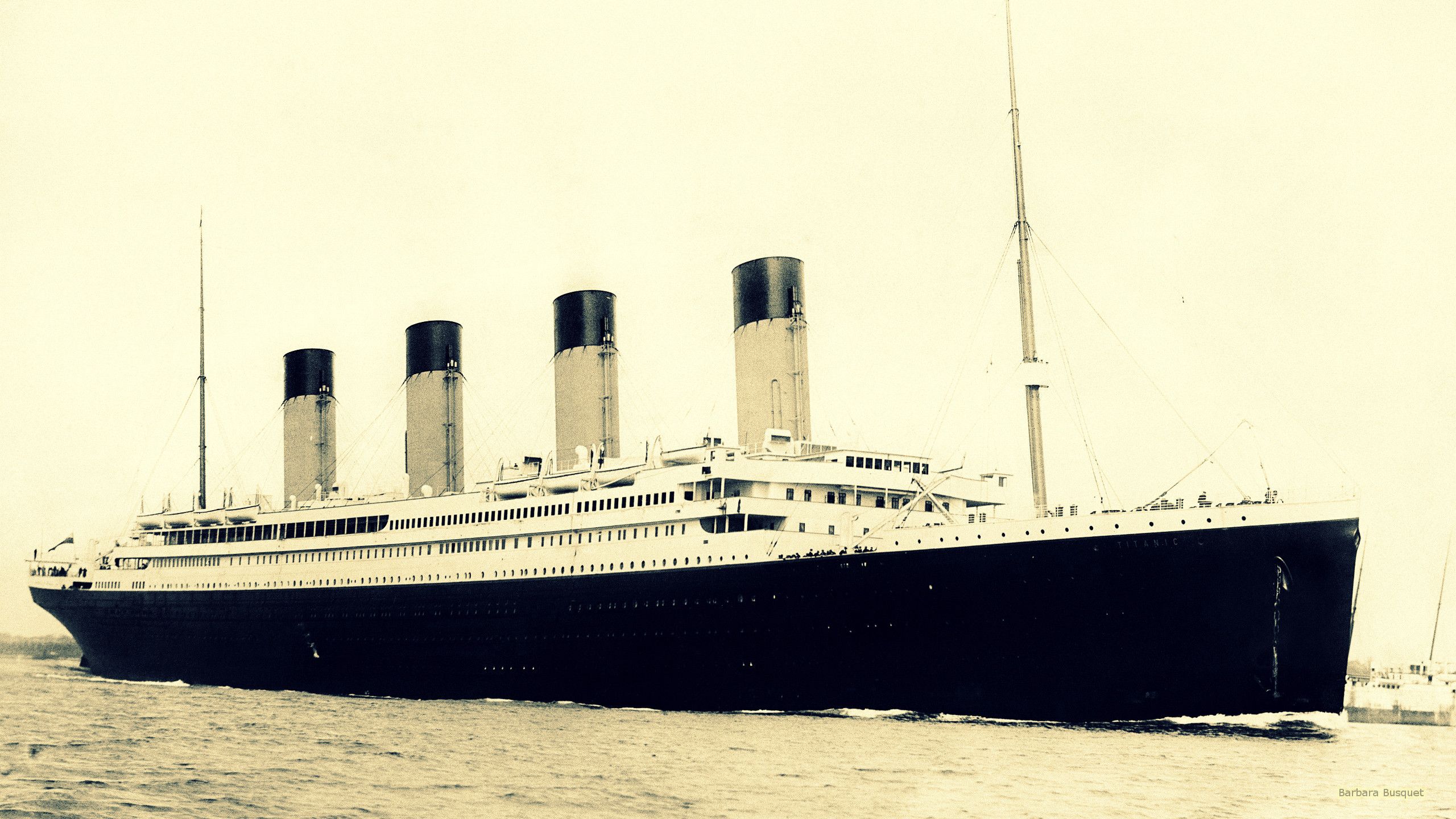It was 109 years ago this month that the RMS (Royal Mail Steamer) Titanic foundered in the middle of the Atlantic Ocean, resulting in the deaths of 1496 people. To this day, there have been very few peacetime disasters at sea which have ended in such an enormous loss of human life.
What’s more extraordinary, is that the fascination with this disaster has remained consistent the whole time. Like a Bible story about mankind’s hubris, it is not only an enthralling narrative, but a teleological one.
The past century has seen an avalanche of museum displays, books, and multimedia, all devoted to the Titanic story. Since Robert Ballard and his crew stumbled upon the wreck in 1985, around 20 different Titanic documentaries have been made, to compliment the enormous collection of TV shows and feature films, all starring the great ship.
The first such effort was a short film released just 29 days after the sinking, called “Saved from the Titanic”, co-written by, and starring, real life survivor Dorothy Gibson (unfortunately all copies of the film were lost in a studio fire). There were 2 other films released shortly after (still in 1912), A silent French Film called “Lahantise”, and a silent German Film called “In Nacht und eis”.
The first Titanic film featuring sound was made in 1929. The first to be filmed in colour was “S.O.S Titanic”, released in 1979. The first production to show the ship splitting in half, was a 2 part television drama, filmed in 1996. It was just one year later that James Cameron’s $200 Million behemoth hit the big screen.
However, the most historically accurate film about the disaster is still the 1958 British movie “A Night To Remember”. Based on Walter Lord’s best selling book of the same name, several survivors of the actual tragedy worked on the film as technical advisers.
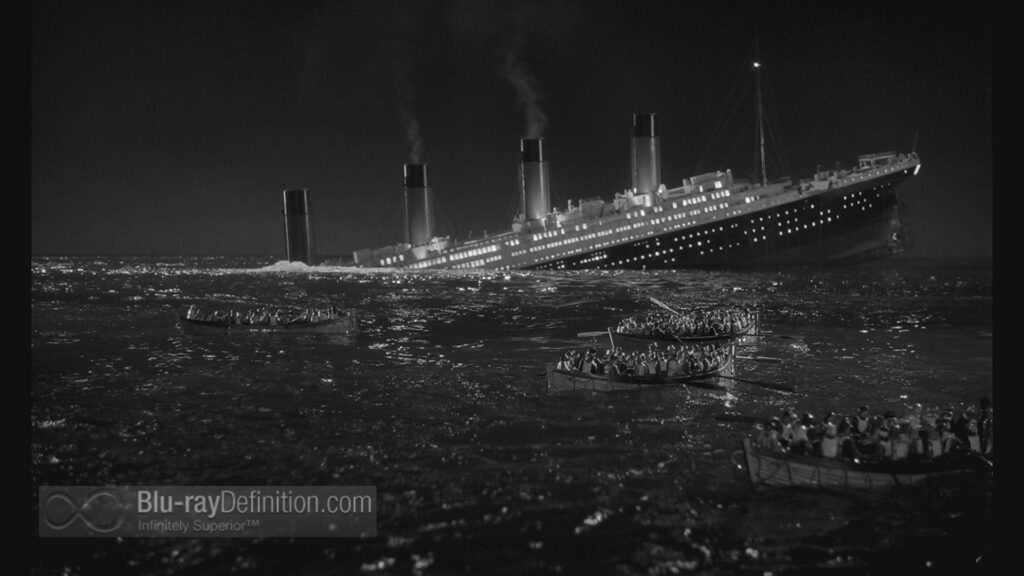
The Nazi’s also had a crack at telling the epic story. In 1943, Joseph Goebbels commissioned the production of a German Propaganda Film, simply titled “Titanic”. It was the first film to combine fictional subplots with the true story of the sinking. In this case, a fictional German 1st Officer heroically fights to save as many people as possible after the cruel and incompetent British cause the ship to sink without enough lifeboats. The Americans in first class are also portrayed as evil incarnate, while the fictional German majority in 3rd class are predictably, the salt of the earth.
With this plethora of information at our disposal, it would be reasonable to conclude that there is nothing more we could possibly learn about the Titanic and the events that occurred before, during and after the tragedy. After all, she had a very short life.
Not exactly. Like many major events from history, the Titanic story has become totally shrouded in myths, legends and conspiracy theories – which despite being debunked a thousand times – just won’t go away. Breaking through all the garbage to locate the objective facts, has consequently become a full time pursuit for many professional and armchair historians.
IN PERSPECTIVE
Amos Elon once said “Hindsight is not necessarily the best guide to understanding what happened. The past is often as distorted by hindsight as it is clarified by it”. Many elements of the Titanic story seem unthinkable to us in the 21st Century, but when put into historical perspective, they are not quite as baffling.
In the late 1800’s, the great ocean liners, which had been sailing the Atlantic for decades, began rapidly expanding in size and speed. To briefly illustrate the progression:
In 1888 the largest ship in the world, was the SS City of New York, weighing in at 10,499 Gross Registered Tonnage (GRT). By 1901 the White Star Line’s RMS Celtic came in at 20,904 GRT. White Star’s main rival Cunard took the top spot in 1907, with the RMS Lusitania at 31,550 GRT – until her running mate, the RMS Mauretania, came along a few months later, at an impressive 31,998 GRT.
In response to these giants, White Star Line pushed the boundaries of ship building even further, by launching the new “Olympic Class” ships. There were to be 3 sisters – RMS Olympic, RMS Titanic and the RMS Britannic, each one around 50% larger than the biggest Cunard Liners.
The RMS Olympic was completed in 1911 at weighed in at a colossal 45,324 GRT. The Titanic was built using the same plans, but with a few amendments. She was finished and ready for service in early April, 1912 and weighed 46,328 GRT – a new record.
Titanic would only hold the record for just over 12 months – until June 1913 – when the German Ocean Liner, the SS Imperator was completed, coming in at 52,117 GRT.
The RMS Olympic has an outstanding service record. She survived many accidents, served in WW1, and even rammed and sunk a German U-Boat (thus putting to bed the idea that Titanic had weak steel – because the resilient Olympic was made of the same stuff). She was eventually retired to a scrap yard in 1937. Had Titanic not sunk, she probably would have had a similar life story.
The 3rd sister, Britannic (coming at 48,158 GRT) was finished in 1914, just in time to be conscripted into the First World War as a hospital ship. She was sunk by a German naval mine in the Mediterranean, on the 21st of November, 1916. She was discovered by Jacques Cousteau in 1975, and is still the largest ship wreck in the world, with the Titanic wreck sitting in second place.
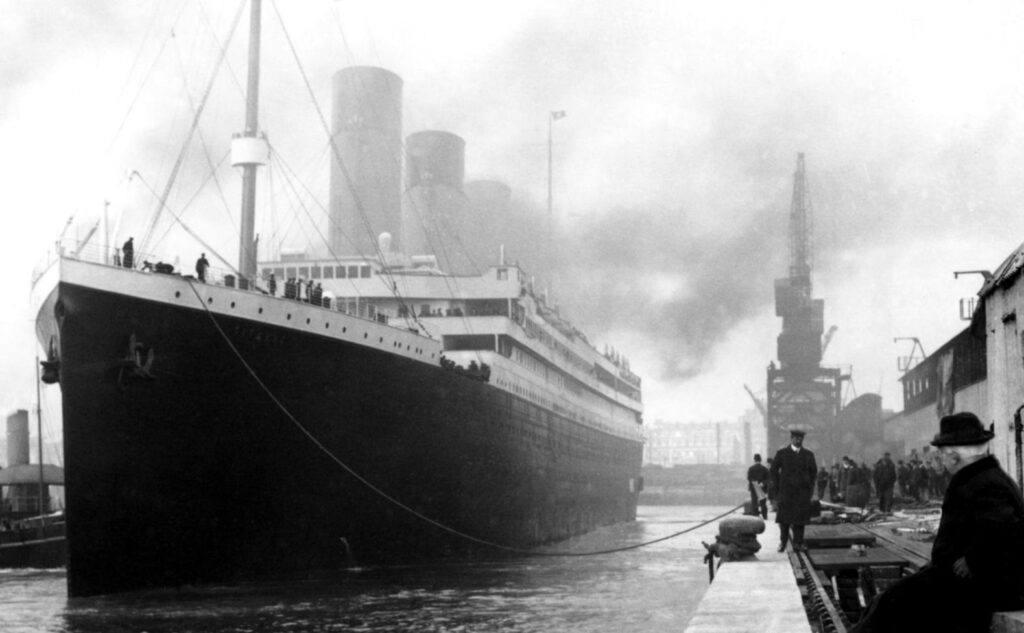
MYTHOLOGY
Titanic did not receive a massive fanfare and lots of media attention when she set sail. The Olympic received all of that, one year earlier. At the time, Olympic was far more famous than her younger sister. Titanic didn’t even sell all of its tickets, so several of her cabins remained vacant for the maiden voyage.
Most of the famous pictures you see of Titanic’s interior are actually photo’s of the Olympic’s interior. Given that the two ships were almost identical – and White Star were behind schedule – they knew that they could easily save time and money by recycling the pictures of her older sister, and only photographing those few parts of the Titanic that were different, like the Parisian Cafe.
The infamous lifeboat situation was not because of vanity or cost cutting. In the early days of the passenger liners, the whole purpose of the lifeboats on board, was to ferry people from one ship to another. At any given time there were hundreds of vessels on the Atlantic, so there was always a big ship nearby. Lifeboats were not seen as something that all passengers and crew would have to ride in for days, anxiously waiting for help to arrive.
The Titanic actually exceeded the number of lifeboats legislated by the Board of Trade regulations. Although those regulations were written in 1890, when the biggest passenger liners were only a quarter of the Titanic’s size. The ship’s crew had actually done some lifeboat drills at Southampton, and they went very well.
The reason so many of the Titanic’s lifeboats were launched partially full during the first hour after the collision with the iceberg, is because at that stage, most people (passengers and crew) had no idea what exactly was going on. And they certainly didn’t want to split up their families and get into a little row boat on the freezing cold Atlantic Ocean, in the middle of the night. Many preferred to remain on the nice, big, electrically heated ship that initially, didn’t feel like it was in trouble.
Additionally, in the early 20th century, Icebergs were not thought of as something that could sink a ship. They could certainly cause a massive amount of damage, but not enough to sink a whole vessel. The designers of the Titanic certainly didn’t imagine that a foreign object could rip a hole (or holes) that would compromise more than 4 compartments.
INTERPRETING “UNSINKABLE”
The unsinkable epitaph was first used by a correspondent writing for the trade journal: The Shipbuilder and Marine Engine Builder in 1910, in relation to the Olympic class. After being given a tour of the Harland and Wolff Shipyards, and a detailed look at the plans, the article opined that “The Captain may, by simply moving an electric switch, instantly close the watertight doors throughout, making the vessel virtually unsinkable”. Once word of this brilliant new design began to circulate, the executives at the White Star Line thought this was really good publicity, so they ran with it, for both Olympic and Titanic. It wasn’t until after the disaster that the “unsinkable” tag really became famous.
Despite what you may have heard on game shows, Titanic wasn’t the first ship to use the S.O.S signal. Whilst most British ships continued to use the old C.Q.D signal, the S.O.S call had been in use since 1908. Titanic used both of them that night. In terms of luxury, she was not unique either. The appointments on Titanic were no grander than those on the Olympic, or any other big passenger liner in 1912. There were just more of them because she was so huge.
For the knowledge and technology available at the time, the actions of Titanic’s crew were understandable. We know with hindsight that they were incorrect, but they were understandable. Would the Ship pass todays regulatory standards? Of course not. But the need to find scapegoats within Captain Smith’s crew or the White Star company are really just a by-product of popular culture.
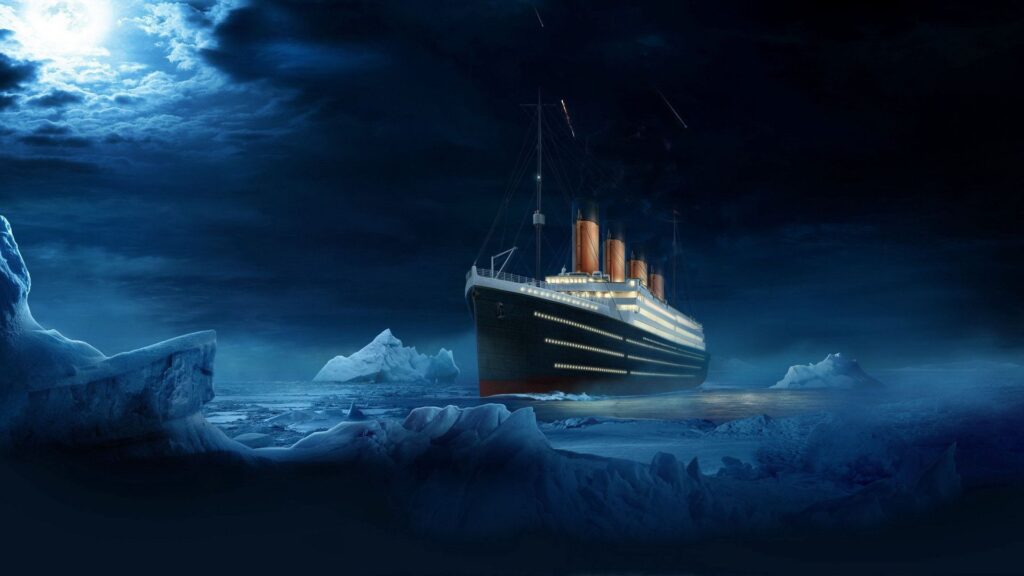
THE MISTAKES
A gentleman named David Blair was due to serve as one of the Officers on Titanic’s maiden voyage, but he was replaced at the last minute. Originally, William Murdoch was to be Chief Officer and Charles Lightoller the First Officer, with Blair coming next as the Second Officer. But on the morning they were due to set sail, Henry Wilde was transferred from the Olympic, and would now serve as Chief Officer on the Titanic.
This meant that Murdoch was relegated to First Officer, Lightoller to Second Officer, and Blair was sent home. This is not significant by itself, but in his disappointed state, Mr Blair forgot to leave behind the key to one of Titanic’s storage cabinets. Specifically, the cabinet which had the binoculars for the Lookout locked inside. So the lads up in the crows nest would have to do their job without them.
We’ll never really know if having access to the binoculars would have made a difference. The crew certainly didn’t seem too worried about it. On April 14, the night was clear, the stars were shining brightly, and seeing conditions were excellent (hence the speed of 22 knots).
But there was something they didn’t know. The region of the Atlantic where the Titanic found herself that night, is near the Labrador current. This is where the cold waters from the north meet the warm waters from the south, and this can produce a mirage effect on the horizon. This means that, to the naked eye, the horizon appears higher than it actually is, and in that layer between the fake horizon and the actual horizon, is precisely where the icebergs float. This is why they didn’t see it, until they were right on top of it.
Left out of James Cameron’s film (although it does feature in the deleted scenes) is the British Leyland Liner, the SS (Steamship) Californian. On the night of the sinking, the passengers and crew of the Titanic spotted the lights of another ship on the horizon. It’s come to be known as the mystery ship. Both the British and American inquiries which were held after the sinking, as well as many historians today, believe that the mystery ship was the SS Californian.
The Captain of the Californian, Stanley Lord, strongly disputed this. His main argument was that the co-ordinates provided by the Titanic as to her location, were completely wrong. There is also evidence that there were other unidentified ships in the vicinity that night, such as an unmarked tramp steamer, which was seen not just by the Californian, but also by the RMS Carpathia and the SS Mount Temple, as they both raced to Titanic’s aid.
THE SS CALIFORNIAN
Earlier in the evening, about half an hour before Titanic’s collision with the iceberg, The wireless operator on the Californian, Cyril Evans, sent a warning message to the Titanic, telling her that their vessel had stopped for the night, due to the massive amount of ice in the area.
Titanic’s wireless operator, Jack Phillips, who hadn’t slept for 48 hours, was on the line to Cape Race (Newfoundland) transmitting passenger’s personal messages. This was how the wireless operators earned their money, as they were employed by Marconi, not the White Star Line.
Since Cape Race was far away, his volume was turned right up. When the message from the nearby Californian came through, it nearly blew his ears off. He promptly fired back telling them to shut up. He had a massive backlog of work and had already received, and passed on, multiple ice messages earlier. Again, his response is understandable, even though it was totally wrong.
Evan’s went to bed after that, nobody else on the Californian knew how to operate the wireless, so they would miss all of Titanic’s SOS calls later on. The crew members on the deck of the Californian, noticed a large steamer stopping in the distance, and did see her shooting off flares, but they were a bit confused.
The correct procedure for signalling distress is to fire off your flares at one minute intervals. Titanic was firing them off at five minute intervals, so the Californian’s crew wasn’t sure what to make of them. After all, ships send up flares for all kinds of reasons; company signals, general celebrations etc.
They reported these things to Captain Lord – who had gone to bed – and he suggested contacting the unidentified steamer with the morse lamp. Titanic was also trying to send out signals with their morse lamp, but with the hazy atmospheric conditions, the crew on the Californian couldn’t really see them. At 2:20am they noticed that the unidentified steamer was gone. They assumed that the ship in question had restarted her engines and gone on her merry way.
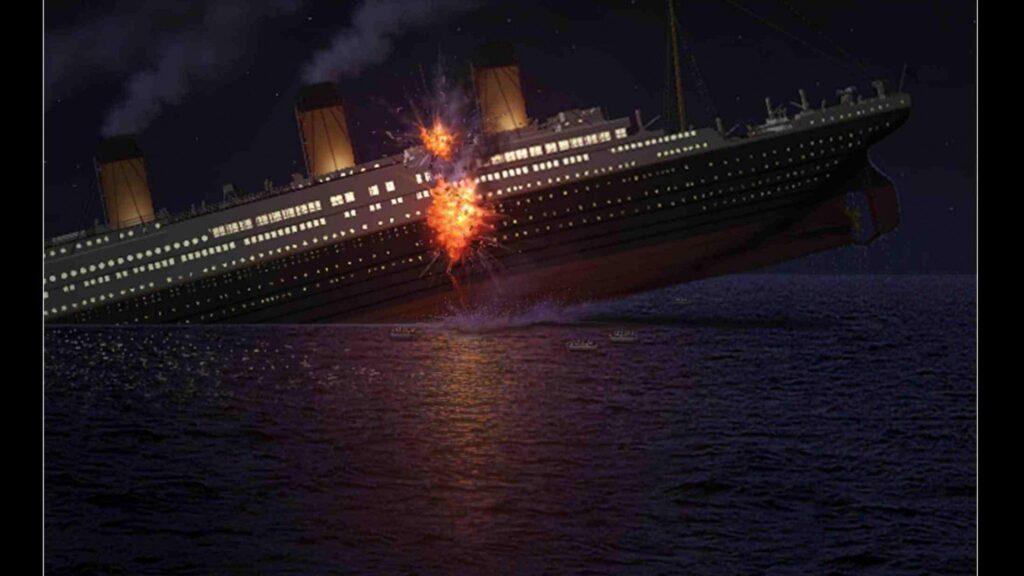
Yes, in hindsight, they should have woken the wireless operator, just to be on the safe side. But their actions were the result of flawed decision making, and not because they were nasty or didn’t care.
IN CONCLUSION
Edwardian society learnt a lot of painful lessons from the Titanic disaster, and international shipping regulations changed dramatically as a result. Obviously, all ships would now be required to have enough lifeboats for everybody on board, and it was compulsory to have a qualified crewman operating the wireless, 24 hours a day. We also saw the establishment of a permanent international ice patrol, which is still in operation today.
Historians have revised the Titanic’s passenger list, and confirmed that exactly 2208 souls were on the great ship when she foundered. The last of the 712 survivors, Millvina Dean, left us in 2009, aged 97. She was only 2 months old at the time of the sinking, and lost her father that night.
The wreck of the infamous liner stills sits on the ocean floor, being devoured by all sorts of bacteria and other little sea critters. Experts say that by the year 2100 it may all be gone. Will we discover something else between now and then?
